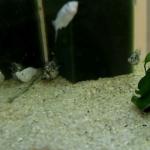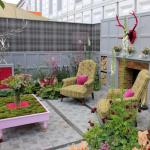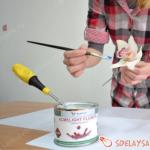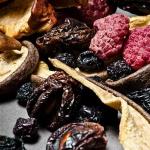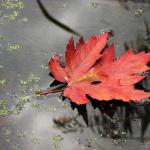What soil to choose for the aquarium - sand, gravel, pebbles, nutritious for plants or black with prices
In order for the aquarium to be a safe and beautiful home for fish and other pets, you should not use contaminated sand or clay as a filler. The soil for the aquarium is needed not only for beauty, it is not so important whether it is black or white, as it is important that the bottom flooring must be safe and suitable for the growth of living plants. This is a kind of garden that serves as a decoration, helps in maintaining the purity of the water, retaining various suspensions and provides a comfortable living environment for the fish.
What is aquarium soil
In order to minimize the time spent on setting up and maintaining a paludarium or aquarium, many beginners do not fill it with soil. Others, in a creative outburst, create real chaos in the aquarium, adding more shells, balls and other accessories from the sale. Both paths are equally wrong. The aquarium soil is a kind of cauldron in which the remains of food, excrement and other organic matter are decomposed with the help of bacteria and other microorganisms.
Functions of aquarium filler:
- substrate for the growth of living plants;
- preparation of good conditions for the development of beneficial bacteria;
- purification and protection of water in the aquarium from the release of highly toxic substances;
- elimination of unpleasant odor;
- aesthetics.
What are the types of bottom decks:
- flooring made of natural ingredients (sand, pebbles, gravel and crushed stone);
- floorings that are obtained as a result of mechanical or chemical treatment (natural materials are used as a basis);
- artificial decking.
Quartz sand for aquarium
One of the most popular types of soil is sand, because it makes the conditions in the aquarium very close to natural conditions. The sand for the aquarium does not require a lot of time for cleaning, because the waste cannot get into the deep layers and it is easy to remove them from the top, in addition, quartz sand ensures the softness of the water. Living plants easily take root in sandy soil, their root systems can quickly take root in it. Some species of fish prefer quartz sand because it is involved in their digestion, and is perfect for fish who like to make minks.
One of the most popular and inexpensive types of sand, quartz sand:
- Aquarium soil quartz sand Biodesign.
- The price in Moscow is 180 rubles for 4 liters, fractions from 1.2 to 3 mm.
- The flooring acts as a mechanical filter and is suitable for all types of fish. It becomes a great place to sleep, hide, and play.
- Pros:
- fine fraction flooring, but not too shallow;
- color - light, but not white;
- all particles are rounded, there is no risk of damage to the fish.
- Cons: Plants need a nutrient pad or top dressing to create good conditions.
But if you need an unusual, but at the same time natural color of the sand, you should pay attention to this option:
- UDeco River Light sand.
- The price is 150-162 rubles for 2 liters.
- Natural soil, its interesting color (light with amber) will be an excellent aesthetic addition to an aquarium or terrarium. Fractions from 0.8 to 2 mm.
- Pros:
- inert to water, does not increase hardness;
- particle size suitable for all fish, even small ones;
- safe natural materials;
- unusual color;
- suitable for both fish and reptiles.
- Cons: not found.

Pebbles for aquarium
Pebbles are often used as substrate to give the aquarium a special charm. These river or sea pebbles are washed and placed on the bottom so that they occupy about 5-6 cm in height. Pebbles for an aquarium are initially not saturated with bacteria, but after a short period of time they will be filled with excrement and become a good soil for plants. To fill the aquarium with greenery, it is worth laying out the bottom with a centimeter layer of red clay before placing the pebbles. When choosing such an eco-friendly soil, you need to remember that it can be difficult to pump out garbage from the aquarium.
Pebbles come in different sizes and colors, for example, one of the most popular natural colors is yellow:
- Pebble soil Polished, fine.
- The price in Moscow is 125 rubles per 1 kg.
- The ground is polished, fine (size 20-40 mm), yellow. It can be used as a top layer on a nutrient layer, or as an independent flooring. Does not need additional processing and cleaning (boiling). Manufacturer - China.
- Pros:
- does not harm bottom fish;
- completely natural;
- does not change the composition of water, does not increase its hardness;
- Cons: not found.
Small pebbles, which will become a favorite flooring even for playful bottom fish, are presented in this version:
- Eco-soil Pebbles Relic No. 1.
- The price is 210 rubles for 3.5 kg.
- The manufacturer selects the required pebble fraction using calibration. The packed soil is rinsed, processed and ready to be put into the aquarium. The size of the stones is 2-5 mm. Can be used in salt and freshwater aquariums. It should be additionally rinsed before installation to avoid cloudy water.
- Pros:
- suitable for all types of fish;
- non-toxic, safe material;
- not additionally painted;
- Cons: not found.
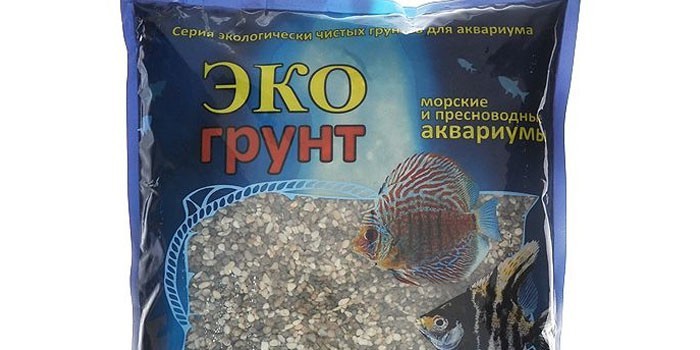
For vegetation floating on the surface of the water, a neutral substrate is also suitable. But if the placement of aquatic flora with a root system is planned, it is necessary that the soil be enriched, saturated with nutrients. Nutrient substrate for aquarium plants affects the biological balance of the aquarium, because the health of the fish depends on the absence of harmful algae and the presence of a sufficient amount of "grass". Such a bottom flooring is sold in two types - soil saturated with the necessary elements or a nutrient substrate.
If you need live plants to be throughout the entire flooring area, it is worth considering the soil, immediately enriched with nutrients:
- JBL Manado nutrient soil.
- The price in Moscow is 405-403 rubles for 1.5 liters.
- This type of soil does not reduce the level of water hardness and does not saturate it with toxins. The porosity of the surface helps a large number of beneficial bacteria grow. It slows down the excessive growth of algae by removing excess fertilizers from the water. Has a reddish brown color. Manufacturer - Germany.
- Pros:
- promotes the growth of the root system of plants;
- good filtration of the surface covered with soil;
- does not damage the antennae of bottom fish;
- Cons: not found.
When there are only a few plants in the aquarium and there is no point in enriching the entire soil, then special feeding is used:
- Dennerle NutriBasis 6in1 soil dressing.
- Price 548-651 rubles. for 2.4 kg.
- The chelate concentrate in the composition promotes the growth of strong leaves, the quartz sand helps to create a soil climate. The top dressing contains natural humic acids (peat), which help plants to absorb nutrients. Suitable for a 50-70 liter aquarium. Manufacturer - Germany.
- Pros:
- absolutely safe for all inhabitants of the aquarium;
- nutrients can be used immediately, or they can be in the aquarium for a long time;
- Cons: not found.
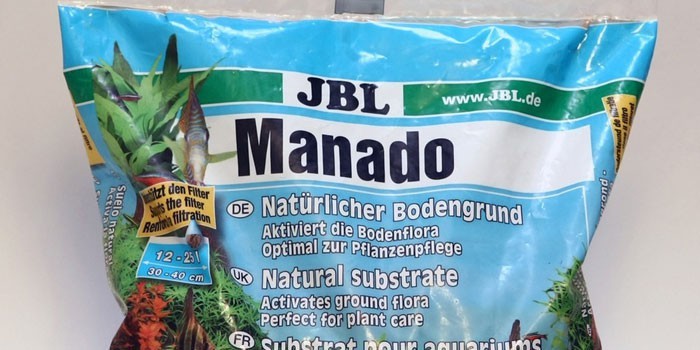
Black soil for aquarium
Considering the decorative function of the substrate, the aquarium soil is designed to emphasize the beauty of the water "garden" and the fish living in it. As practice shows, black soil in an aquarium looks very beneficial, because, thanks to its color, contrasting fish look very bright. Any dirt will be more noticeable on a white background than on a black or dark gray background. Black aquarium soil can be natural (black quartz, granite chips) or painted (almost any type of soil, but you need to choose those brands whose product does not fade).
When choosing a black flooring, pay attention to the German-made flooring, it is of excellent quality:
- Dennerle Crystal Quartz.
- The price in Moscow is 979-1260 rubles for 4.92 kg.
- This soil is black, well-rounded granules, safe for the population of the aquarium. The decking is perfect for good vegetation development. Fraction 0.7-1.2 mm. Bottom decking for nano aquariums. Manufacturer - Germany.
- Pros:
- resistance to CO2;
- rounded particles;
- natural color;
- promotes the development of the root system of plants.
- Cons: not found.
From cheaper options, you can see the following soil:
- Hydor H2SHOW primer.
- Price 432 rubles. for 5 kg.
- High quality painting, natural quartz. Well rounded, safe and comfortable for the aquarium dwellers. Designed to be used in conjunction with other decorations in the "Waterworld" concept, but can also be safely used alone.
- Pros:
- does not emit harmful substances, does not fade;
- neutral, suitable for all aquariums.
- Cons: not found.
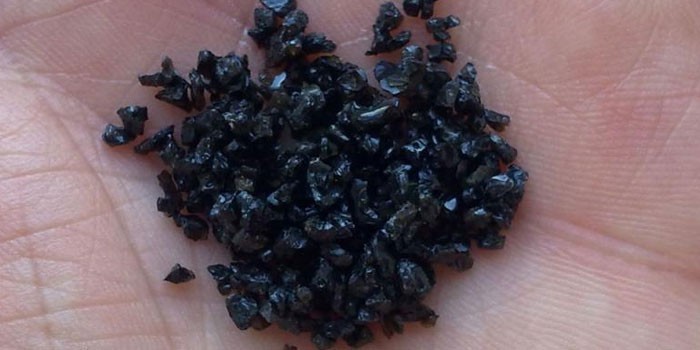
Aquarium gravel
Gravel looks very beneficial in a glass aquarium or terrarium. These stones are made using mechanical processing from granite, basalt, feldspar and other minerals. The gravel for the aquarium is washed with warm water (the use of chemical cleaning agents is prohibited), gently stirring is placed on the bottom of the aquarium. Such soil should be rounded in the aquarium, since fish can be injured by sharp corners. Aquarists recommend using gravel from 3 to 5 mm for the bottom flooring, or mixing stones of different sizes.
If you are tired of standard plain flooring, you should consider unpainted multi-colored gravel:
- UDeco Canyon multicolored gravel.
- The price in Moscow is 300 - 323 rubles for 2 liters.
- A beautiful mixture of flat stones of different colors (brown, red and red-brown) and fractions (from small 2 mm to large 22 mm). Thorough rinsing is required before placing on the bottom. Manufacturer - Germany.
- Pros:
- not colored, not toxic;
- does not contain limestone;
- Cons: increases the hardness and acidity of the water.
A good option at a reasonable price is multi-colored river gravel:
- Eco Soil river gravel.
- Price 108 rubles. for 1 kg.
- River gravel ranging in size from 4 to 8 mm. Multi-colored (most of the stones are red, beige and dark brown).
- Pros:
- low cost;
- well rounded stones;
- Cons: not found.
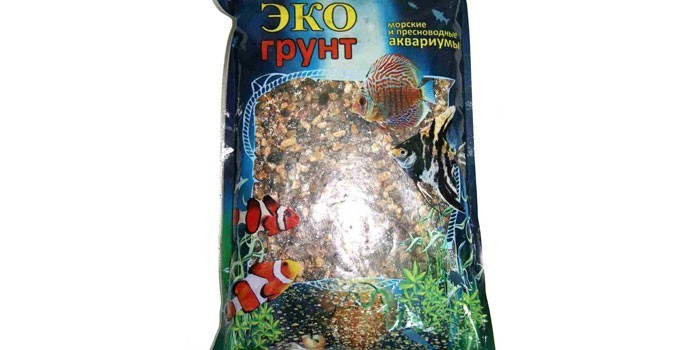
White substrate for aquarium
The popularity of using white soil for aquariums is due to its similarity to the color of the seabed. Definitely, an aquarium with white soil looks unusual and advantageous. When choosing a flooring of a light shade, it is better to focus on quartz than marble, it remains white longer and is inert with respect to the chemical composition of water. In addition, fish excrement is often visible on white soil, which does not add to its aesthetics. The fish cannot “disguise themselves”, they become shy and the color turns pale. Such soil must be siphoned and cleaned frequently.
If you decide to purchase marble white soil, one of the best options would be:
- Laguna natural white marble.
- Price in Moscow is 224 rubles per 2 kg.
- Beautiful, snow-white soil, particle size from 5 to 8 mm. Suitable for aqua design, suitable for salt and fresh water. Natural crumb is packed in a bag. Manufacturer - China.
- Pros:
- environmentally friendly product;
- inert to water;
- Cons: not found.
If the choice fell on granite, you can see the white soil of the same brand:
- Laguna natural granite chips.
- Price 453 r. for 2 kg.
- Beautiful, snow-white soil, particle size from 2 to 4 mm. Manufacturer - China.
- Pros:
- ecological natural product;
- suitable for sea and fresh water;
- Cons: not found.
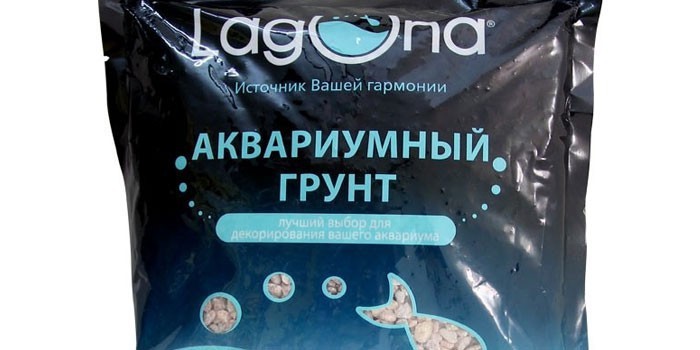
Colored soil for aquarium
Fans of bright aquariums often think about purchasing a flooring in rich colors. But, as practice shows, colored soil for an aquarium is not the best choice for the health of fish and the growth of aquatic organisms. Often manufacturers use substandard (sometimes toxic) dyes for coloring particles, which bring big health problems to pets. But even if the soil is not harmful, over time it loses its saturation and becomes pale. When choosing a bright ground, it is better to prefer natural rather than artificial materials.
An unusual mix of pebbles of different bright colors from the leader in the production of aquarium decor:
- Color mix soil, bare, Barbus Gravel.
- The price in Moscow is 190 rubles for 3.5 kg.
- Multi-colored artificial stone bottom decking, at a very pleasant price. The size of the stones is 10-20 mm. Well rounded, bright and unusual ground. Bright colors are an unusual decoration for any aquarium. Manufacturer - China.
- Pros:
- well rounded particles;
- safe for plants;
- Cons: not found.
- Dennerle Color Red Quartz.
- The price is 1020-1200 rubles for 4.92 kg.
- Aquarium flooring, red. Gravel, particle size 1-2 mm. Manufacturer - Germany.
- Pros:
- resistance to CO2;
- rounded fines;
- does not change color, does not stain water;
- neutral to water, does not change hardness;
- helps to strengthen the root system of plants.
- Cons: not found.
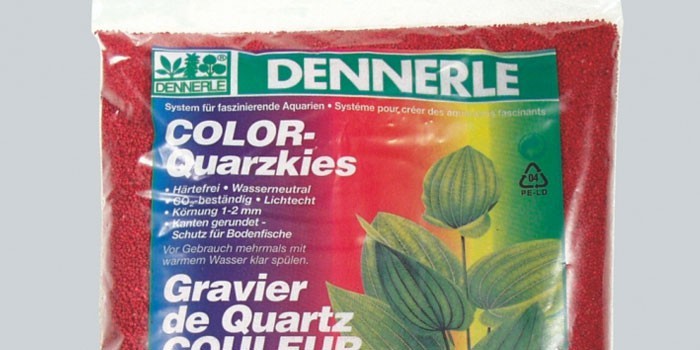
Coral sand for aquarium
For those hobbyists who decide to make a salt water aquarium or a cichlid, coral sand is perfect for an aquarium, but for freshwater fish living in soft water, such a flooring is dangerous. Coral sand changes the chemical composition of water, increases its hardness and acidity, and contains lime. If you need a lot of beneficial algae in your aquarium, you shouldn't choose this type of soil, as shredded corals are not the best substrate for flora. But if pets prefer hard water, the use of such a flooring will not do any harm.
Coral soil from natural corals is often gray in color, although it happens in large and small fractions. Coral sand presented by TM Laguna:
- Laguna natural coral sand.
- Price 360 p. for 2 kg.
- Particle size from 0.8 to 1 mm. Manufacturer - China.
- Pros:
- environmentally natural product;
- safe for the inhabitants of the aquarium;
- suitable for sea and fresh water.
- Cons: gives a slight turbidity of water, if not washed, requires frequent cleaning.
The crumb has a large fraction, but consists of the same natural materials - corals:
- Coral chips UDeco Sea Coral.
- Price 517 rubles. for 2 liters.
- Unusual soil from the manufacturing company, fraction 1-2 mm. Has a porous surface, due to which beneficial bacteria develop on it.
- pros
- the soil has already been washed by the manufacturer;
- absolutely harmless;
- no dyes.
- safe for fish, shrimp and other inhabitants of the aquarium.
- Cons: not found.

Artificial soil for aquarium
As the name implies, such flooring is based not on natural materials, but on those obtained empirically. Small particles of plastic, glass and polymers are often used as artificial soil for an aquarium. It is water-neutral. It is not worth expecting that in such a flooring the plants will turn magnificently green, by itself it does not contribute to their growth. To improve the conditions for flora, artificial soil is often poured over the main layer of another material. Bright colors of particles, luminous stones will adorn any aquarium.
Artificial soil has recently appeared on the market and so far is represented by only a few types of soil more similar to decor. Color Mix:
- Decor Aqua Marbles drops, BARBUS.
- Price in Moscow is 61 rubles per 0.200 kg.
- Unusual, large glass droplets add sophistication to even an ordinary aquarium. The pellets are well rounded, safe for the aquarium population. Fraction 16 mm. Packed in a grid.
- pros
- safe;
- bright colours.
- Cons: not found.
Of the monochromatic options, one of the most beautiful is blue:
- Decor Aqua Marbles balls, BARBUS.
- The price in Moscow is 79 rubles per 0.200 kg.
- Blue balls made of transparent blue glass, well rounded and absolutely safe for fish. Fraction 16 mm. Packed in a grid.
- pros
- does not affect the chemical composition of water;
- safe;
- bright colours.
- Cons: not found.
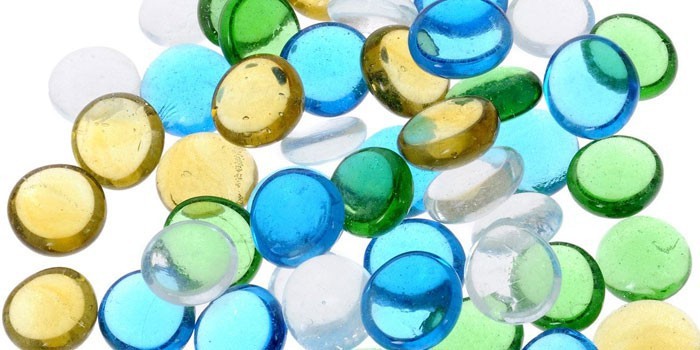
How to choose a substrate for an aquarium
If the aquarium has been purchased, the fish have been selected, it's time to start choosing the flooring. The soil for the plants in the aquarium, as well as for the fish, must have the necessary properties. The best soil for an aquarium is one that, in addition to aesthetic pleasure, helps the fish feel good, acts as a filter and becomes part of the biological system that allows flora to develop. It is worth choosing a soil not only by color, but also by purpose, paying more attention to the characteristics and preferences of the fish.
Soil selection criteria:
- the ideal size of soil particles is 3-5 mm (sand may be a smaller fraction, but care must be taken that it is not too small, otherwise any movement of the fish will raise a cloud of dust);
- the bottom flooring must be covered with a thickness of 3-7 cm, it is enough for the normal growth of plants;
- if you are not sure about the purity and quality of the soil, you can boil it or treat it with hydrochloric acid before laying it;
- do not use soils of red and orange colors, they release iron into the water;
- siphoning and cleaning sand soil is more difficult due to too small fraction of particles;
- pebbles and other stones should not be too large, otherwise food will get stuck between them, decompose and at the same time have a bad effect on water;
- stones, driftwood, branches should be without sharp corners, otherwise there is a risk that the fish will get hurt;
- if you do not need a large amount of algae, you can do with spot feeding instead of laying the nutrient layer;
- the use of expanded clay as soil is prohibited;
- do not use coral sand in freshwater aquariums with "soft water" fish;
- white soil may turn yellow, green or brown over time;
- you should not use shells and shell rock as a decor in an aquarium, they significantly increase the hardness of the water and provoke the process of rotting stuck food;
- the artificial soil for the aquarium is not porous, it does not allow the development of a sufficient number of beneficial bacteria;
